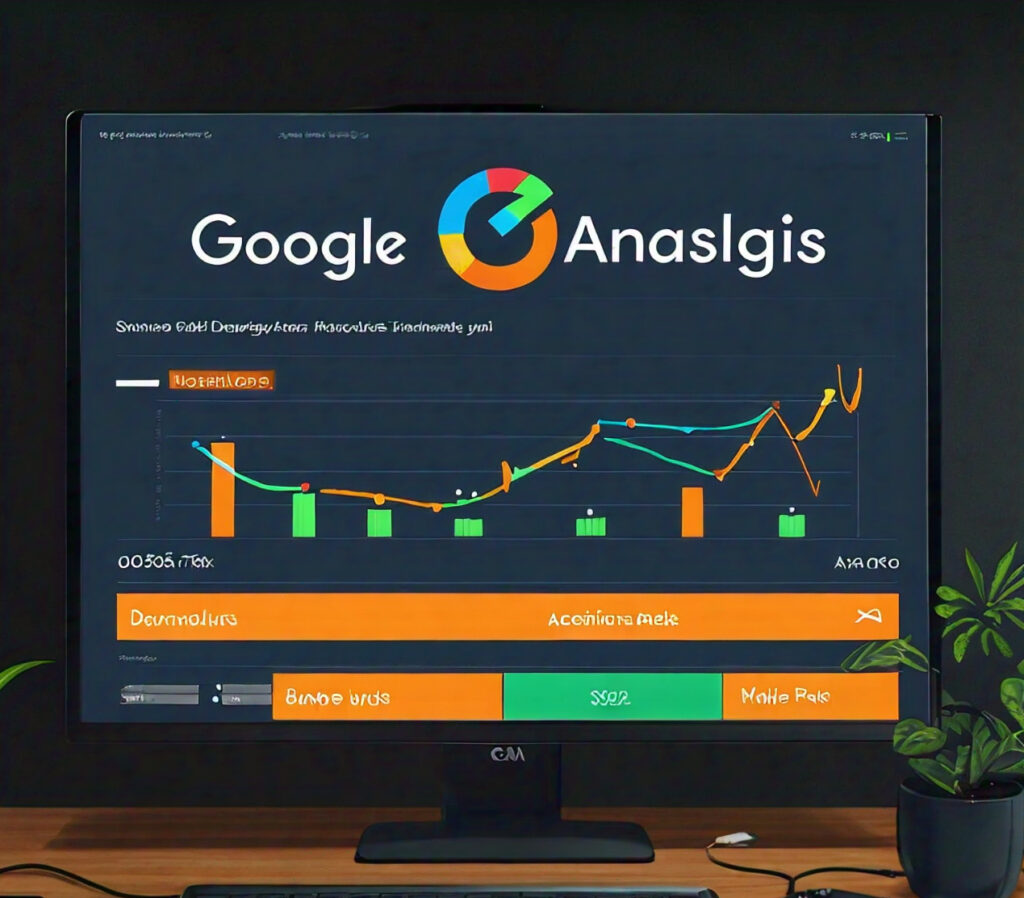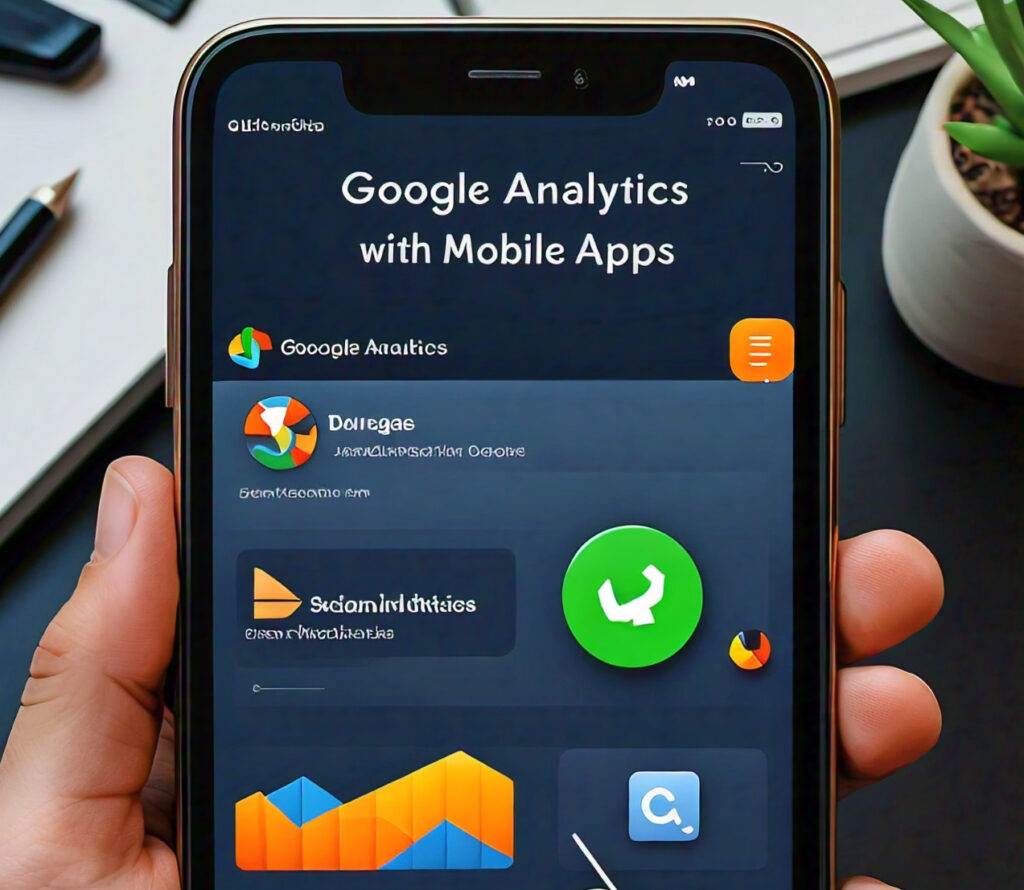Success in today’s fast-paced world of mobile app development boils down to your understanding of user behavior and app performance.
Google Analytics for mobile apps taps the power to enable developers and marketers to get insights into the way users engage with their applications.
Using this framework, you can make data-driven decisions on the augmentation of user experience, driving more added value to your users, and ultimately pursuing success with your app.

This comprehensive guide will take you through the setup to in-depth and advanced analysis techniques for using Google Analytics right in your mobile apps.
Whether you are a pro app developer or you are just starting in the journey of making a mobile app, this article will serve you right with knowledge and strategies to put in place for the maximum realization of Google Analytics on your mobile application.
Setting Up Google Analytics for Your Mobile App
Before receiving your insights, you will have to set up Google Analytics on your Mobile Application. Below is the guide to get you up and running:
Create a Google Analytics Account
Create a Google Analytics account or, if you lack one, go ahead to google.com/analytics and click on “Start for free.” Follow the prompts to continue.
Set Up a Property for Your Mobile App
Once you have an account, you will want to create a property for your mobile app:
Click on “Admin” located in the lower-left of your Analytics Dashboard
Under “Property,” click “Create Property”
For this option, choose “Mobile app”
There are required fields for information about your app, such as Name.

After you set up your property, you will receive a Tracking ID. This is very essential, given that the unique ID will help in wiring your app to Google Analytics.
Integrate the SDK
Start collecting data by utilizing the Google Analytics SDK within the current mobile application:
Android
Google Analytics for Firebase SDK
iOS
Google Analytics for Firebase SDK
Google Analytics Services SDK
App Tracking Set Up
Initiate the Analytics SDK and configure tracking for the events and user properties you’d like your app to be able to monitor.
Navigating the Google Analytics Interface for Mobile Apps
Now that you’ve gone ahead and set the Google Analytics for your mobile app learn to navigate the interface:
- Real-Time Reports These reports give you the chance to view what is happening with your app in real time. Explore how many users are currently active, where they are located, and which events they are triggering.
- Audience Reports
Audience reports let you view who your users are based on demographics, interests, and behaviors. - Acquisition Reports
These reports have the specifics on how users find your app and install it. Therefore, you learn where most of your marketing channel acquisitions or sources are more effective. - Behavior Reports
Behavior reports give you a summary of how users engage with your app. This identifies all screens visited and which events they trigger. - Conversions Reports
If you have a goal-tracking set, then you can easily check how effectively your app can achieve your goals.
Key Metrics to Track in Google Analytics to Track Mobile Apps
To make proper use of Google Analytics concentrate more on the following critical metrics:
User Acquisition: Summary
a) New Users: How many times this is the first time a user is engaging with the app
b) User Source: The sources from where users are coming from, is this organic search or paid ads.
User Engagement
- Active Users: how many unique users are launching your app within a given timeframe
- Session Duration: average time users spend in the app
- Screen Views: the most popular in-app screens
- Event Tracking: custom in-app events signaling key user actions
User Retention
- Retention Rate: The percentage of users visiting your app again once done with the experience • Churn Rate: The percentage of users who stopped using your app 4. App Performance • Crash Rate: Rate of occurrence where the app crashes • App Speed: Loading time and response speed of the app 5. Conversion Metrics • In-App Purchases: Monitor the purchase rate of users in the app
Goal Completions: Goals you have specified in your application, such as registration, feature usage, etc.
Defining Your Custom Events and User Properties
The definition of your custom events and user properties should expose deeper insights into user behavior.

- Custom Events
Custom Events describe the actions performed by users in your application. Some common examples of custom events include:
Button clicks
Feature usage
Engagement with content
A custom event is instrumented using the following code structure:
analytics.logEvent("event_name",
`` `parameter1: “value1”,
parameter2: “value2”
});
2. User Properties
One can segment an audience based on certain specifics known as user properties. Some of the most common user properties include:
User preferences
Subscribed/Non-subscribe status of users
User level in a mobile game
To set a user property, one can use the following function.analytics.setUserProperty(“property_name”, “property_value”);
“`
- Custom Reports and Dashboards
In addition to pre-designed reports, further customization of reports and dashboards in Google Analytics can go a long way in offering a personalized view of app performance.
- Custom Reports
Create a
- Go to Customization > Custom Reports
- Click “New Custom Report”
- Select the metrics and dimensions that you wish to include
- Choose how you want the data to be filtered and displayed
- Dashboards
A very useful feature in GA, dashboards will keep you one step ahead by providing all your relevant metrics at a mere glance:
- Go to Customization > Dashboards
- Click “Create”
- Add widgets that measure the metrics you want to be displayed
- Then arrange those metrics as you wish the widget placed
Segments can help you target your efforts on groups within your user base. For mobile apps, these could be:
- New vs. Returning Users
- Users by Acquisition Source
- High-Value Users — such as users who make frequent purchases
To use a segment:
- Click on “Add Segment” at the top of any report
- Use the pre-set segments that you have defined for yourself or create your own
- Apply the segment to any report for easier analysis
User Flow and User Behavior Analysis
Knowing how users flow through your app is critical to optimizing the user experience. This can be done in the following steps:
- Behavior Flow Report
Behavior flow enables you to showcase these steps. This can be achieved by the following steps:
- Go to Behavior > Behavior Flow
- Investigate where users enter your app, how they navigate through the app, and where they usually drop off.
- Screen Flow Report
This is just like Behavior Flow but specifically deals with app screens. Steps include:
- Go to Behavior > Screen Flow
Identify which screens are the most used and where users leave the app.
Setting up and analyzing goals
Goals help you measure how well your app meets specific objectives:
Setting up goals
Admin>Goals
Add New Goal
Select a type for a goal like Destination, Event, or Screen Views
Set up the Goal details
Analyzing goal performance
Conversions>Goals>Overview
Here you can visualize goal completion rates and conversion paths
Firebase Integration
Google Analytics for mobile apps easily integrates with Firebase, Google’s premier mobile development platform. That provides the following extended benefits:
- Crash Reporting
This kind of report enables you to easily find bugs and get them fixed as soon as possible.
- A/B Testing
Testing app versions to find the app for the best experience and the most optimal conversion rate.
- Cloud Messaging
Send messages in big bunches to many people about the app users you want to inform based on information obtained from Analytics.
- Dynamic Links
Smart URLs that dynamically change destination pages based on the user.
App Store Optimization Using Google Analytics
How GA data can influence your ASO strategy:
- Keyword Optimization
You can use the Search Terms report to identify keywords used in typing to find your app.
- User Demographics
Use the demographic data to update your app store listing to better fit your target users.
- User Behavior Insights
Use your in-app behavior data to showcase the most popular features and highlight these in your description.
Implementing Cross-Device Tracking
For applications that have a website component or exist on more than one platform:
- User ID
You can utilize a User ID to associate a series of sessions on different devices and different platforms with that user.
- Cross-Platform Analysis
Use the Cross-Device reports to help you understand the cross-platform behavior of your users.
Privacy of Data and Compliance
In the course of using Google Analytics, the privacy of data must be ensured and some critical points were observed:
- Data Retention Settings
Set your data retention to the standards of laws such as the GDPR.
- User Consent
Make sure you have the proper user consent for your app.
- Anonymous IP
Enable IP anonymization to ensure user anonymity.
Common Trouble-Shooting
Issues can still arise, even after attempting to set Google Analytics for mobile apps properly:
- No Data
- Check the implemented code
- Is the app internet-connected?
- Blockers not preventing the use of ad blockers or the user’s system firewall from stopping
- Data Discrepancies
- Check your Google Analytics data against data from other sources of data
- Beware of any filters or segments that you’re using that might be changing what you’re seeing
- High Bounce Rates
- Map user fallout or app usability issues by using flow analysis
- You can also see app crashes or slow load times
Advanced Techniques in Analytics
Once you’re pretty good with the fundamentals, it’s time to learn the following advanced techniques:
- Cohort Analysis Study how different types of users behave over time.
- Funnel Analysis
Build funnels that let you visualize and optimize the conversion process.
- Machine Learning Insights
Leverage the machine learning power of Google to bring out the hidden insights and patterns in your data.
Conclusion
Google Analytics for mobile apps is a strong tool to get insight into your app performance and user behavior. With these steps provided in the guide, you can set up, configure, and get the best out of your Google Analytics with your access.
Remember that the process of wringing the most out of Google Analytics is never-ending. Go back to your data regularly, test your new hypotheses, and work on the next iteration of your application based on what you learn. Consider the trends that are forming over time and, most importantly, don’t let obvious granular insights just slip by.
The more adept you grow in Google Analytics, the more you make data-powered decisions on user experience optimization and the increase in engagement toward driving success for your mobile app. Whatever you optimize on your user interface, whatever subtle marketing strategies you are perfecting, or perhaps new features that are being planned, Google Analytics insights will become your indispensable guideposts on your mobile app development journey.
By using data analytics, you would be well-equipped with the best competitive landscape for mobile apps, thereby being able to develop an app that truly resonates with your user pool. So, therefore, jump in, make use of this valuable data, and watch your mobile app grow and evolve based on actionable real insights.






